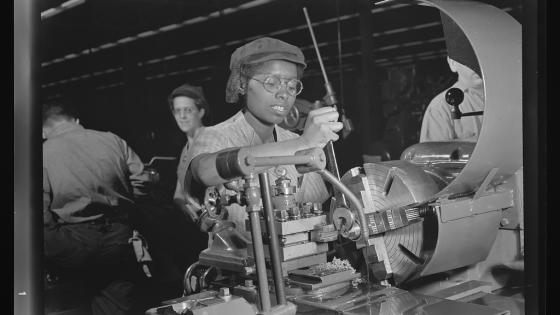Last week the World Economic Forum released its Global Gender Gap Report (Hausmann et al. 2010). As expected, the data in the report illustrates a significant and persistent pay and achievement gap between males and females around the world.
- The gap exists in all countries, although some countries (e.g., those in Scandinavia) had a smaller gap than others (e.g., those in the Middle East).
- In every single country for which there are data, females tend to earn less than males in similar jobs, and in all but four countries, females account for less than half of the senior positions in business and government.
- Even if we account for gender differences in labour force participation, in only 11 countries (representing just 2.4% of the world population) do females account for their share of senior positions in business and government.
This evidence is consistent with Bertrand and Hallock (2001), who show that women make up only 2.5% of the top executives in S&P 1500 firms, and Wolfers (2006), who shows that females make up only 1.3% of CEOs of the same firms. These differences even persist in developed countries, where females are more likely to attend college than males (e.g., women make up 58% of college enrolment in both the US and UK according to the World Economic Forum report).
What accounts for these persistent gender differences in professional achievement and pay remains an open question. Explanations range from discrimination to differences in preferences. Gneezy et al. (2003) and Gneezy and Rustichini (2004) propose a novel explanation for the differences in achievement based on the idea that females perform worse than males in competitive environments. In Gneezy et al. (2003) college students race to complete mazes, and Gneezy and Rustichini (2004) consider footraces between children. Both studies show that males increase their performance by more than females when faced with competition.
A closer look at the male advantage during competition
In recent research (Cotton et al. 2010a), we consider this explanation for the gender achievement gap in detail. At the heart of our analysis is a series of in-classroom competitions we conducted with 505 primary school students. The contests involved students completing math quizzes in competition against randomly assigned opponents. Each student participated in up to five sequential rounds of competition. Each round involved a new opponent and new quiz questions selected from past year standardised tests for their current age.
Our experimental approach has four primary advantages over past studies.
- First, the size of our experiment allows us to run a number of different treatments in which we vary slightly the design of the competition and observe how these changes affect performance differences.
- Second, where past experiments identify gender differences in a single competitive interaction, we observe how the results change over sequential periods of competition as participants warm up and gain experience.
- Third, we focus on math competitions, which are academic in nature and directly related to one’s ability to succeed in academic and professional environments (see for example Joensen and Nielsen 2009).
- Fourth, we have data on participants’ past standardised test scores, giving us a formal measure of ability absent from earlier analyses. These are ideal ability measures when considering why males and females with similar academic qualifications experience different levels of success when faced with competition.
In our baseline experimental treatment, students competed against each other to complete a math quiz as quickly and accurately as possible. In this setting, we find significant evidence that males perform better than females during the first round of competition. This is true even when we control for math ability, and is consistent with the findings in Gneezy et al. (2003) and Gneezy and Rustichini (2004). What is surprising is what happens after the first round of competition, when the male advantage completely vanishes.
In rounds two through five, we find absolutely no evidence of males performing better than similar-ability females. In fact, we present some evidence that males may perform worse than females in later periods. We then return to some of the classrooms two weeks later to run additional rounds and find no evidence that the first round differences reappear.
The analysis goes on to show that even the short-lived first-round gender differences are not robust to changes in the design of the competition. If we tell the students that the competition is “not a race,” or if we use language arts questions instead of math questions, then we find no evidence of a male advantage in any round of competition, not even the first. This suggests that the existence of the male advantage depends crucially on the framing of the competition as a race, and only exists for certain tasks (Günther et al. 2010 suggest this may be due to math being perceived as a male task). Even when it does exist the male advantage vanishes completely after an initial period.
What can we say about the causes of long-run achievement differences?
The results do not support the hypothesis that a male performance advantage within competition explains long-run achievement differences. Workplace competitions are rarely perceived as races, and success usually depends on performance across many periods. These are two aspects of competition which, according to our results, eliminate the male advantage.
Although the male advantage within competitions is not a sufficient explanation for the gender achievement gap, it still provides clues about what is actually responsible for the gap. In a second article (Cotton et al. 2010b), we present a game theoretic model of contests that allows competitors to differ in terms of ability, preferences, and beliefs about their own or their opponent’s ability. We then compare the theoretical predictions with data from our previous study and Gneezy et al. (2003). This allows us to rule out a number of explanations for the male advantage (when it does exist) proposed in the literature. We reject explanations based on male overconfidence, misperceptions about relative ability, and some preference differences. Explanations involving female underconfidence and adverse female reaction to competition are consistent with only some of the evidence. We identify only three explanations that are consistent with all or almost all of the evidence:
- males are initially less risk-averse than females,
- males receive a greater boost in performance due to changes in adrenaline or testosterone, and
- males initially care more about winning or get greater enjoyment from competition than females.
The three most likely explanations not only explain the initial performance differences observed in the data, they will also result in males choosing competition more often than females. Someone who gets more enjoyment from competition or is less risk averse is less likely to avoid competitive environment. Thus, males will be more likely than females to compete against co-workers for advancement, or choose to enter competitive fields in the first place. These results are consistent with Niederle and Vesterlund (2007), who present evidence that males are more likely to engage in competition compared to similar-ability females, and argue that the selection story may drive achievement differences.
Policy implications
Our results have significant policy implications. If the male performance advantage within competition is responsible for the male-female achievement gap, then efforts to eliminate the achievement gap should focus on correcting for performance differences within competition, possibly through affirmative action policies. We show that this is not the case. Rather, our results suggest the policy to eliminate the achievement gap should encourage female participation in competitive settings. Future research should consider the optimal policy for achieving these goals. One possibility is to increase female exposure to competition (e.g., Title IX policy in the US, which requires equal funding for male and female sports in school).
References
Bertrand, Marianne and Kevin Hallock (2001), “The Gender Gap in Top Corporate Jobs”, Industrial and Labour Relations Review, 55(1):3-21.
Cotton, Christopher, Frank McIntyre, and Joseph Price (2010a). “The Gender Gap Cracks Under Pressure: A Detailed Look at Male and Female Performance Differences During Competitions”, NBER Working Paper 16436.
Cotton, Christopher, Frank McIntyre, and Joseph Price (2010b). “Causes of Gender Differences in Competition: Theory and Evidence”, University of Miami Working Paper 2010-20.
Gneezy, Uri and Aldo Rustichini (2004), “Gender and Competition at a Young Age”, American Economic Review, 94(2):377-381.
Gneezy, Uri, Muriel Niederle, and Aldo Rustichini (2003), “Performance in Competitive Environments: Gender Differences”, Quarterly Journal of Economics, 118(3):1049-1074.
Günther, Christina, Neslihan Arslan Ekinci, Christiane Schwieren, and Martin Strobel (2010). “Women can’t jump? An experiment on competitive attitudes and stereotype threat”, Journal of Economic Behaviour and Organization, 75(3),395-401.
Hausmann, Ricardo, Laura D Tyson, and Saadia Zahidi (2010), “The Global Gender Gap Report”, World Economic Forum.
Joensen, Juanna Schroter and Helena Skyt Nielsen (2009), “Is there a Causal Effect of High School Math on Labour Market Outcomes?”, Journal of Human Resources, 44(1):171-198.
Niederle, Muriel and Lise Vesterlund (2007). “Do Women Shy Away from Competition? Do Men Compete too Much?”, Quarterly Journal of Economics, 122(3):1067-1101.
Wolfers, Justin (2006), “Diagnosing Discrimination:Stock Returns and CEO Gender”, Journal of the European Economic Association, 4:531-541.





